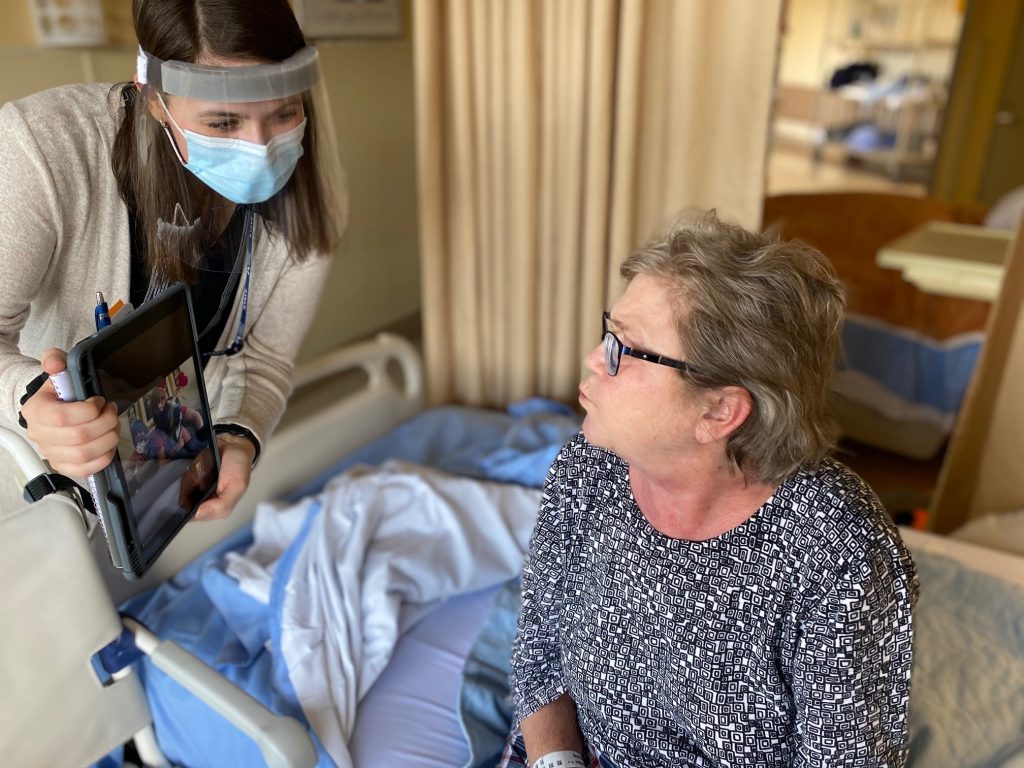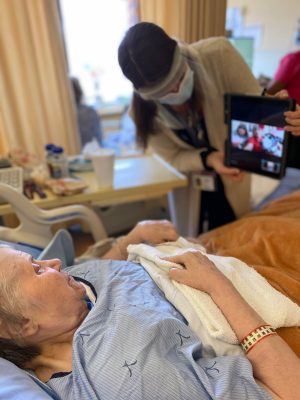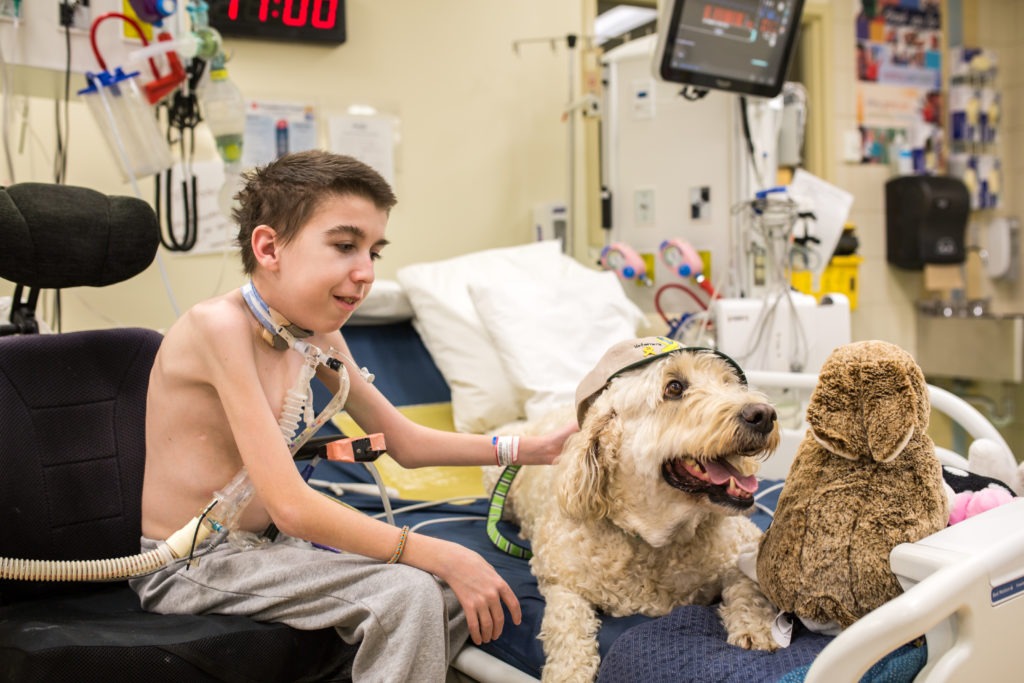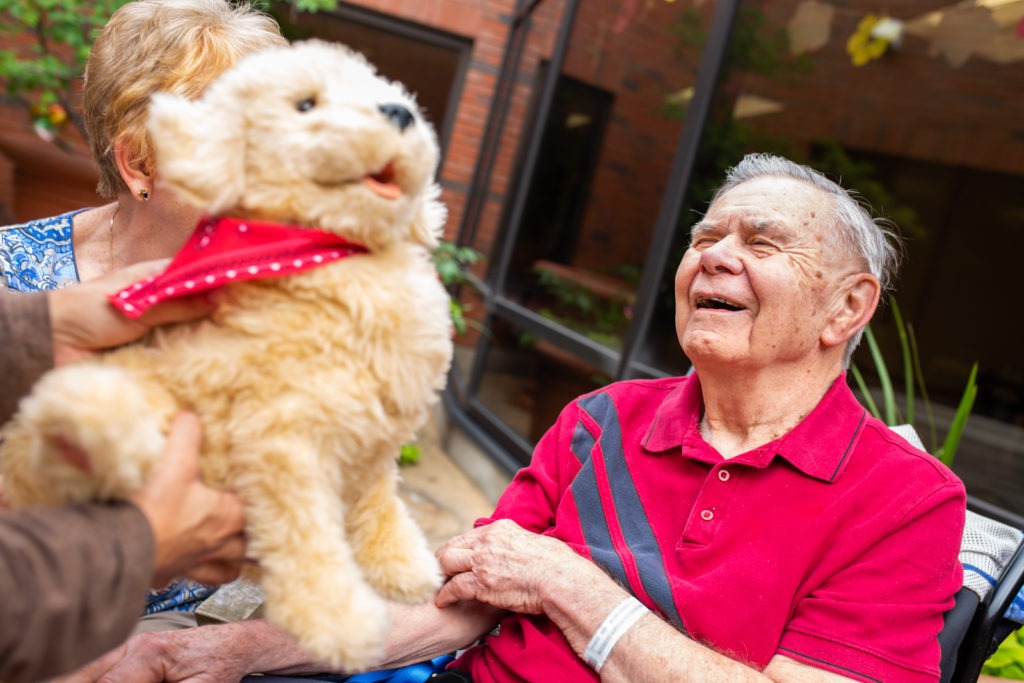
Paws-itive virtual therapy
Since 2002, pet therapy has been a welcome event for palliative care patients at Hamilton Health Sciences’ St. Peter’s Hospital (SPH). They light up with a smile and enjoy the gentle distraction for a few minutes while their furry friends wag their tails and relish in the attention.
But when the pandemic hit last March, in-person pet therapy sessions were postponed and it wasn’t long before patients, staff, and even the pet therapy volunteers, started to miss their visits.
Sisters Margaret Mackenzie and Carolyn March are volunteers with St. John’s Ambulance and have been bringing their dogs to SPH patients in palliative care for nearly 20 years. “I love being able to bring a smile to the patients,” says Mackenzie. “Even seeing the dogs enjoy the visits – it helps me, too.”

Angelique, a patient at SPH, and Cori Sattler in a virtual pet therapy session.
A doggone good time
Virtual pet therapy was introduced to SPH palliative care in July 2020. Staff at the hospital bring an iPad into patients’ rooms and sessions are held via video chat. Mackenzie and March are on the other side of the screen with their pets Penny and Manu. Despite patients not being able to physically interact with the dogs, the virtual therapy sessions are still a success.
Therapeutic recreationist at SPH, Lyndsey Charles, says the volunteers will see 10 to 15 patients each week for virtual pet therapy with each session lasting about five minutes. “I’m surprised at the level of engagement virtual pet therapy gets,” says Charles. “Sometimes the dogs move a little off-screen because they don’t understand what’s going on, but the patients are still happy to see them.”
SPH patient Loretta Card was recently discharged from palliative care after a 16-month stay. Virtual pet therapy helped cheer her up while she was there. “I really enjoyed it. The dogs don’t understand what’s going on, so it’s up to you to talk to them,” she says. “It was still nice to see them. They kind of looked at you on the screen, but they do know someone is talking to them.”
Mackenzie says that while Penny and Manu don’t understand they’re on screen, the joy the virtual visit brings to patients makes virtual pet therapy worth the try. “Bringing a few minutes of happiness to patients is helping them and I’m glad we’re doing it. Even the staff love the pets.”
Getting creative with it
Volunteers get creative to make the sessions as fun as possible. For Valentine’s Day, Mackenzie and March had Penny and Manu wear headbands with hearts sticking out from the top. “We love dressing them up and the dogs don’t mind. The patients love it,” she says.
Morgan Richardson, volunteer resource coordinator at Hamilton Health Sciences, says volunteers are actively finding ways to continue connecting with patients throughout the pandemic. “The need to give back during the pandemic was very apparent,” says Richardson. “Volunteer Resources is looking at creative ways to integrate and engage our volunteers by recognizing the need of our patients. We are thankful to have partners across who’ve embraced the virtual volunteering.”



